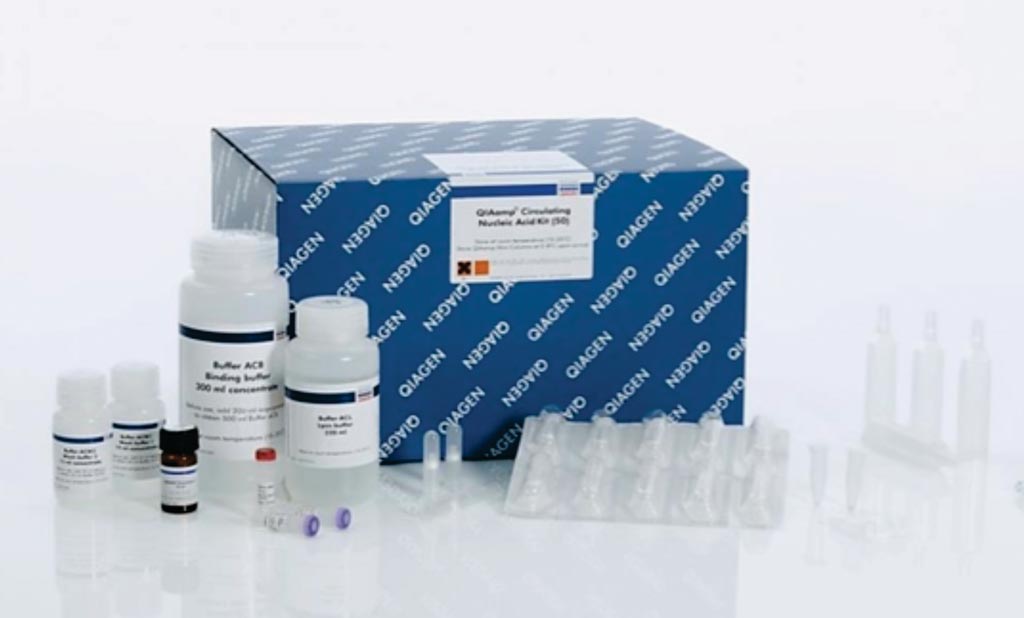Potential Brain Tumor Liquid Biopsies Developed
By LabMedica International staff writers
Posted on 20 Nov 2018
Liquid biopsies are fluid samples from patients, for example from the blood or urine, which provide a less invasive way to monitor disease compared to tumor biopsies. A less intrusive test could be hugely beneficial for brain tumors where collecting samples can be difficult and risky for patients.Posted on 20 Nov 2018
The detection rate and concentration of cell‐free tumor DNA (cftDNA) in the plasma of patients with glioma are extremely low, making glioma refractory to current plasma‐based liquid biopsy approaches. Recent studies using DNA sequencing of cerebrospinal fluid (CSF) samples showed that the fraction of mutant DNA in CSF was higher than in the plasma of glioma patients.

Image: The QIAamp circulating nucleic acid kit (Photo courtesy of Qiagen).
Scientists from the Cancer Research UK (Cambridge, UK) and their colleagues recruited 13 patients with glioma and analyzed their CSF. DNA was extracted from single aliquots (2 mL) of the pre‐operative CSF samples using the QIAamp circulating nucleic acid kit. The team used untargeted, low‐coverage whole‐genome sequencing (< 0.4×) to detect somatic copy number alterations (SCNAs) in cell‐free DNA in the CSF of glioma patients. Combining analyses of these SCNAs with DNA fragmentation patterns determined using paired‐end sequencing allows detection of cftDNA in CSF using shallow whole‐genome sequencing (sWGS) data.
The team determined the presence of cftDNA in CSF without any prior knowledge of point mutations present in the tumor. They also showed that the fragmentation pattern of cell‐free DNA in CSF is different from that in plasma. This low‐cost screening method provides information on the tumor genome and can be used to target those patients with high levels of cftDNA for further larger‐scale sequencing, such as by whole‐exome and whole‐genome sequencing. SCNAs were detected by sWGS in CSF from five out of 13 patients. Cell‐free DNA fragments are shorter in CSF than in plasma, with > 50% of fragments below 150 bp. CSF cell‐free DNA fragment length distributions showed 10‐bp periodic peaks, which were decreased in samples where SCNAs were detected. SCNAs and DNA fragmentation patterns in sWGS data can enhance tumor detection using CSF samples.
Florent Mouliere, PhD, the first co-author of the study said, “Liquid biopsies are showing great promise for a number of cancer types, but tests for brain tumors have lagged behind due to the low levels of tumor DNA found in body fluids, in particular the blood. Our work shows that a cheap, easily available technique can be used to analyze tumor DNA in cerebrospinal fluid. In the future, we envisage that this technique could be used to identify patients who may benefit from further tests that could help monitor their disease, opening up more tailored treatment approaches.” The study was published on November 6, 2018, in the journal EMBO Molecular Medicine.
Related Links:
Cancer Research UK










 (3) (1).png)



